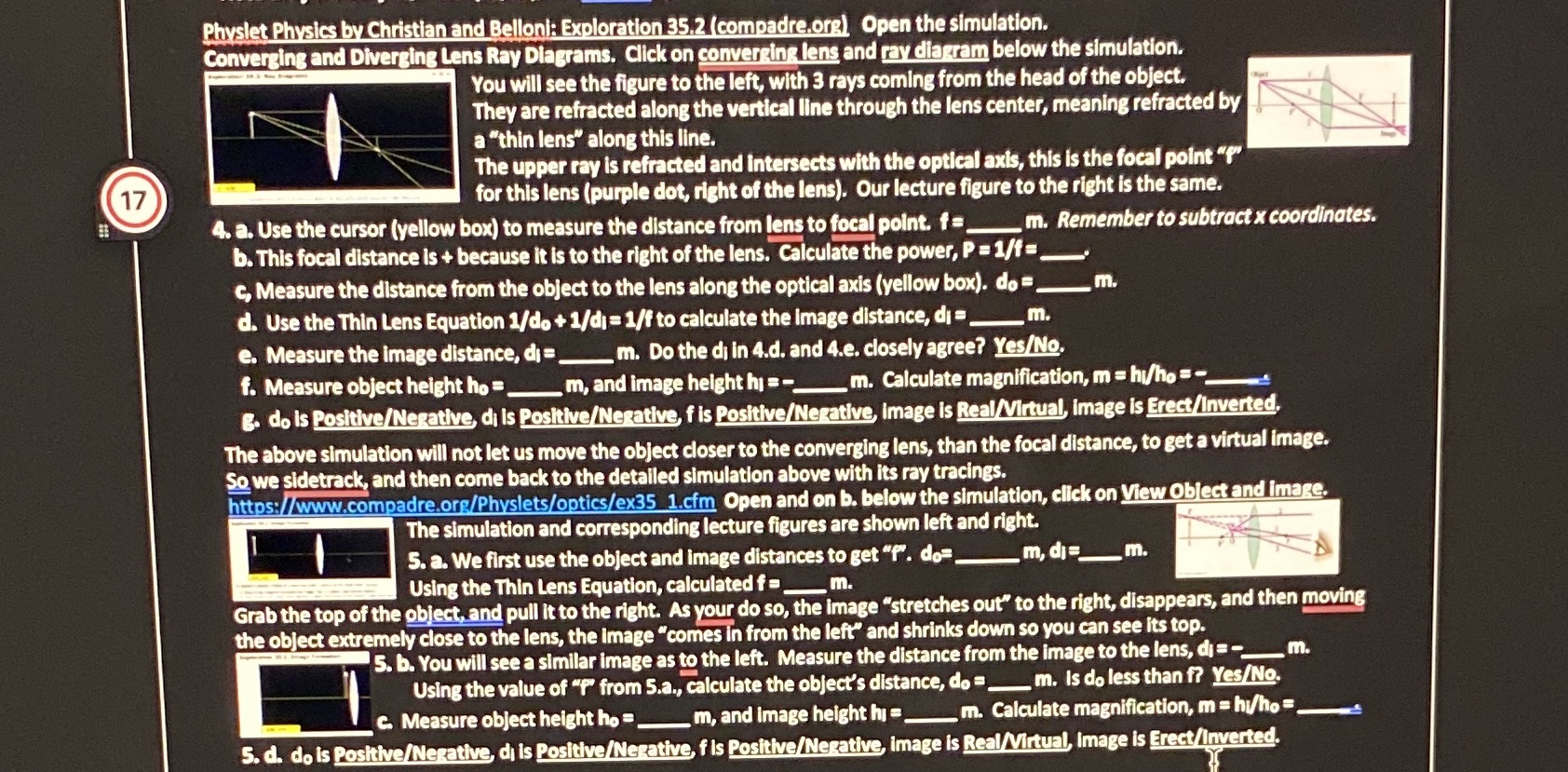Referenceshttps://www.compadre.org/Physlets/optics/ex35_2.cfmhttps://www.compadre.org/Physlets/optics/ex35_1.cfm
Physlet Physics by Christian and Belloni: Exploration 35.2 (compadre.org) Open the simulation. Converging and Diverging Lens Ray Diagrams. Click on converging lens and ray diagram below the simulation. You will see the figure to the left, with 3 rays coming from the head of the object. They are refracted along the vertical line through the lens center, meaning refracted by a "thin lens" along this line. The upper ray is refracted and intersects with the optical axis, this is the focal point "(" 17 for this lens (purple dot, right of the lens). Our lecture figure to the right is the same. 4. a. Use the cursor (yellow box) to measure the distance from lens to focal point. f= m. Remember to subtract x coordinates. b. This focal distance is + because it is to the right of the lens. Calculate the power, P = 1/f= c, Measure the distance from the object to the lens along the optical axis (yellow box). do = m. d. Use the Thin Lens Equation 1/do + 1/dj = 1/f to calculate the image distance, di= _m. e. Measure the image distance, di=_m. Do the di in 4.d. and 4.e. closely agree? Yes/No. f. Measure object height ho =_m, and image height hi=-_m. Calculate magnification, m = hi/ho =-. g. do is Positive/Negative, di is Positive/Negative, f is Positive/Negative, Image is Real/Virtual, image is Erect/Inverted, The above simulation will not let us move the object closer to the converging lens, than the focal distance, to get a virtual image. So we sidetrack, and then come back to the detailed simulation above with its ray tracings. https:/www.compadre.org/Physlets/optics/ex35 1.cfm Open and on b. below the simulation, click on View Object and image. The simulation and corresponding lecture figures are shown left and right. 5. a. We first use the object and image distances to get "f. do=. m, dj= m. Using the Thin Lens Equation, calculated f = m. Grab the top of the object, and pull it to the right. As your do so, the image "stretches out" to the right, disappears, and then moving the object extremely close to the lens, the image "comes in from the left" and shrinks down so you can see its top. 5. b. You will see a similar image as to the left. Measure the distance from the image to the lens, di =-_ m. Using the value of "P' from 5.a., calculate the object's distance, do =_m. Is do less than f? Yes/No. c. Measure object height ho = _m, and image height hi=_m. Calculate magnification, m = hi/ho = 5. d. do is Positive/Negative, dj is Positive/Negative, f Is Positive/Negative, image is Real/Virtual, Image is Erect/Inverted







